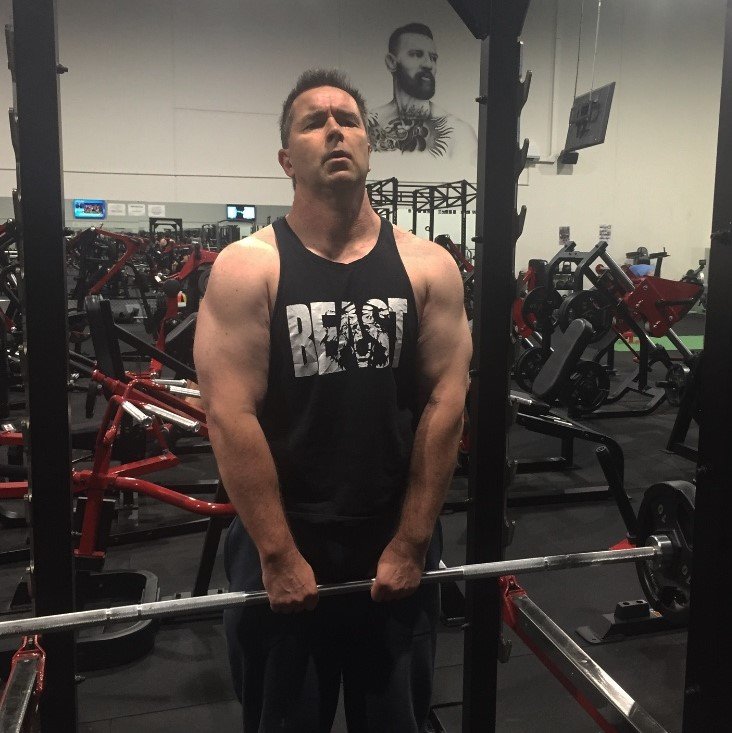Tired of all the BS content on getting shape?
People trying to sell you cookie cutter courses for $599?
Ready to get serious about building real muscle?
Want to pack on some size?
As a personal trainer, gym owner and fitness writer, I know as well as anyone: Building muscle is hard work. But it’s not rocket science. Yet, the billion dollar bodybuilding industry wants you to think that it is. These vultures feed off of your desire to get massive muscles and so they dissect every minute aspect of the subject to get clicks and to sell you overpriced supplements that you don’t need.
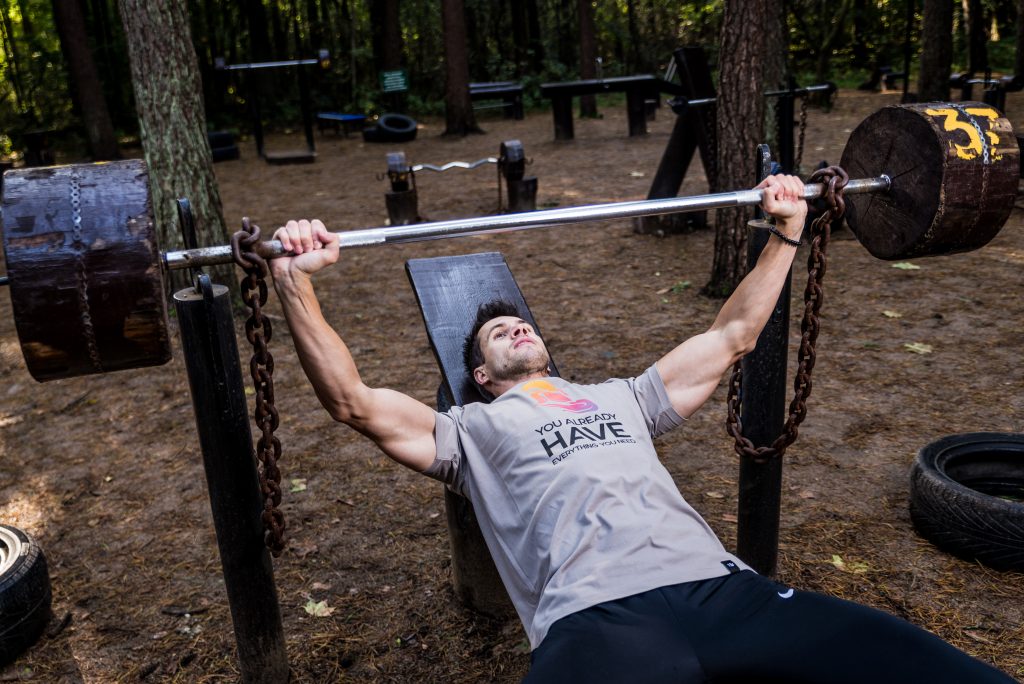
The truth is that building solid, lean muscle mass isn’t about putting a microscope on every aspect of what you do in and out of the gym. It comes down to six things.
Get these half dozen pillars right and you can forget about all the other BS that’s out there. In this article, we’ll drill down on the six pillars of building muscle to allow you to break through your plateaus and pack on the mass that your hard work deserves! You can learn everything you need to know about how to build strength and muscle at home effectively in the next fifteen minutes.
The Six Pillars of Building Massive Muscles
- Eat to Grow
- Lift Heavy
- Recover
- Sleep
- Supplement
- Be Consistent
Let’s now dig into each of these pillars so that you can nail them one at a time.
Eat to Grow

Every rep you perform is tearing your muscles apart and making them weaker. The food that you eat is what determines whether those muscles will grow back bigger or stronger, stay the same or get even weaker. Unless you have a surplus of quality protein calories in your diet, you will never gain muscle.
Yet, most guys simply aren’t eating enough of the right stuff to fuel their muscle growth.
To work out how many calories you need to consume, multiply your body weight by 20.
A guy who’s 170 pounds needs ~3400 calories per day to drive muscle growth. Take that figure and divide it by 6 to work out your per meal caloric goal.
Spread your meals 3 hours apart and have a quality lean protein source at each sitting (chicken, eggs, protein powder, beef). You want to take in 1.25 grams of protein for every pound of body weight.
Do this consistently, day in and day out, and your body will be in an anabolic state that will have it primed for muscle growth.
Lift Heavy
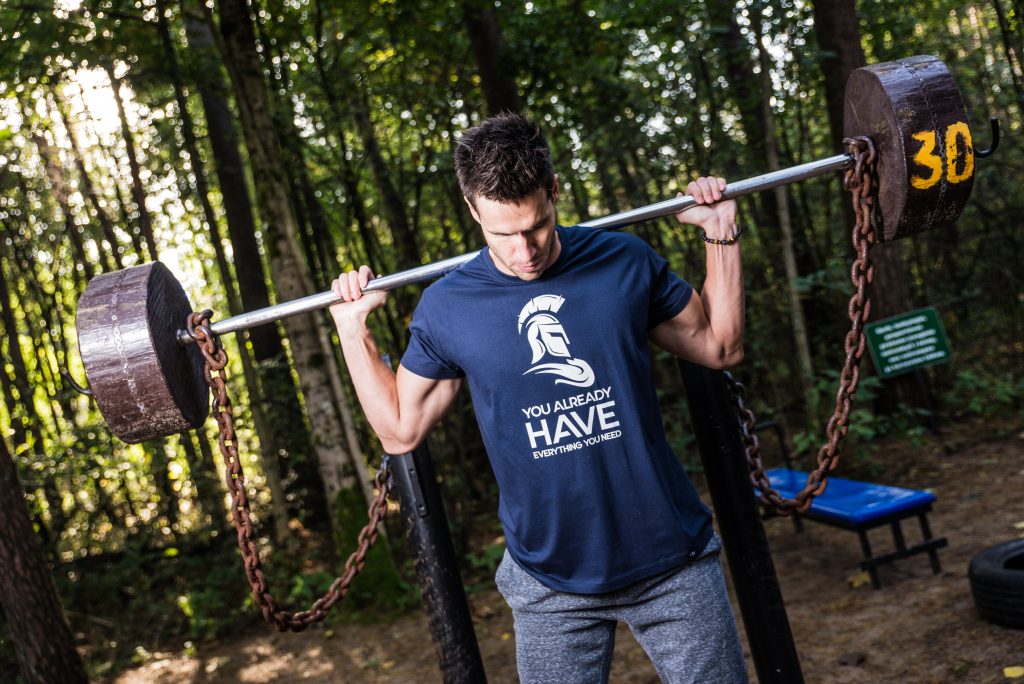
Do not be afraid of heavy weight.
It is primarily what will drive your muscle growth. All of the old school bodybuilders built their physiques on a foundation of power training, without all the glitzy machines and new-age supplements.
It’s time to get back to old school.
So, forget all the fancy machines and strip your training back to the basics. These are the best mass building exercises if you are training for size . . .
- Squats
- Deadlifts
- Power Cleans
- Bench Press
- Military Press
Learn to do these 5 best mass building exercises with proper form.
After warming up with a set of 12 reps on light weight, your working sets will be in the 4-8 rep range. This is your sweet spot for maximum muscle gain when you are training for size. It will allow you to get the greatest testosterone response from your training. It will also help you to maintain correct form and to push maximally on every single rep.
You don’t have to join a gym to build massive muscles. If you lift weights at home, all you need is a barbell, weights and a power rack to be able to train safely. This workout will allow you to build a big back, chest, quads and arms.
How do you determine the weight that you’ll be lifting?
Here’s a simple 2 step procedure to work it out:
Step One
For each of the core mass building exercises listed above, determine your maximum poundage for a single rep. Have a spotter to assist you as load the bar to the point where you can perform just one repetition with perfect form. This is your One Rep Max.
Step Two
Take 80% of your one rep max. This is your working weight for that movement. So, if your one rep max on the bench press is 200 pounds, your working weight is 160 pounds.
You will perform 4 working sets for each exercise. On the first set you will aim for 8 repetitions. Set two will zone in on 6 reps. On set three you will strive for five. And your final working set will be an all out effort to eke out 4 repetitions.
On each succeeding set you will naturally be weaker than on the preceding one. To achieve maximum recovery between sets, you will rest for 2 1/2 minutes between sets . Keep that time strict so that you ensure that you are unracking the weight exactly 150 seconds after you’ve ended the last set.
Your goal is to add a little weight with each set. As the reps come down, the resistance needs to go up. Each time you train, your goal must be to lift more. Progressive resistance is the key to muscle growth.
Full Body Training vs Split Routines
The bodybuilding magazines and websites have made building muscle extremely complicated (and extremely lucrative) to the extent that every guy thinks he needs to do at least 6 exercises for his biceps and triceps alone.
They’ll tell you split routines are the default workout style. Anything less is for the pencil neck geek and the clueless klutz.
Yet, look back at the Golden Age of bodybuilding in the 1950’s and 1960’s and you’ll see guys who were lean, aesthetic, strong and had massive muscles – and they trained almost exclusively with full body training.
So, let’s take at look at the benefits of full body training versus a split routine.
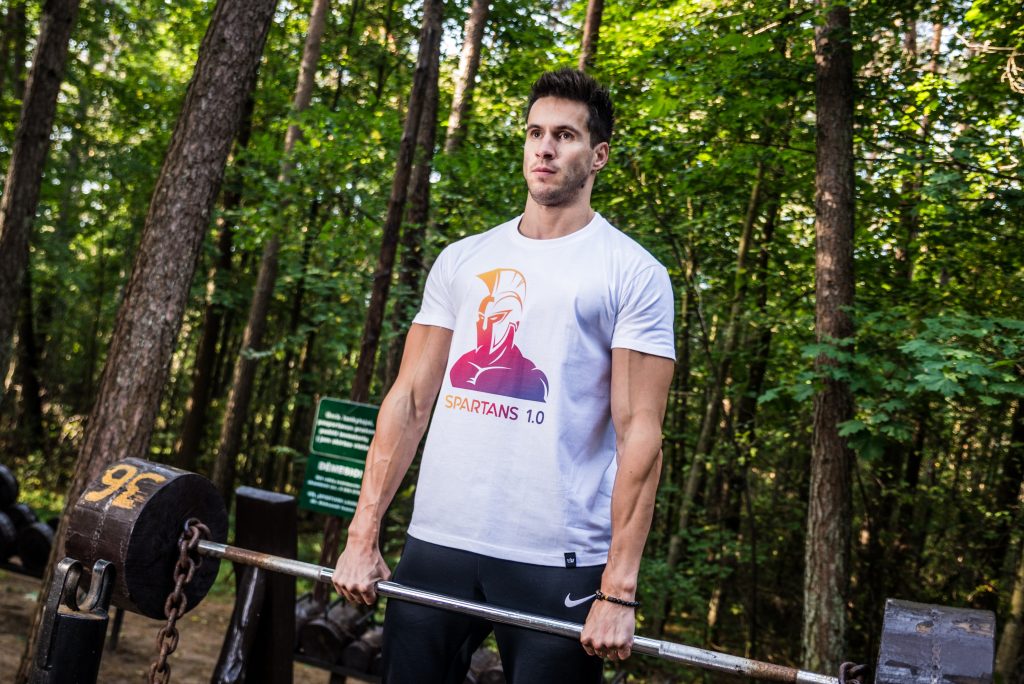
Full Body Pros
Fat Loss – Full body training will burn a whole lot more calories than split training. That’s because it’s built mainly around compound movements. Doing exercises like squats and deadlifts one after the other will rev up your body’s fat burning hormones, spike testosterone and growth hormone.
Builds More Muscle – In a recent study, strength and muscle gains were monitored over 12 weeks for two groups of trainers, one doing 3 full body workouts on consecutive days and the other doing a 5 day training split. Both groups had four years of lifting experience. Despite the fact that the split group were in the gym more often, the total training volume was the same. Yet, the full body group had significantly greater gains in both muscle size and strength.
Synchronized Muscle – When you train with a full body routine, your entire body is working in harmony. Your body wasn’t made to work in isolation as it does in a split routine. When you focus on compound movements that work your muscles groups together you develop more functional muscle.
Recovery Ability – The key to all muscle growth is recovery. You do not build muscle when you train, You actually break muscle down when you train. When you train on a 3 day full body workout, you allow your body a full day’s recovery between each workout. Yet, on a split routine, you are assuming that one body part is recovering while you work another body part the next day. Yet, it doesn’t work that way. The stress of training, even if it is on another body part, will eat into your recovery ability, preventing you from making the gains that your hard work deserve. Your body will be in a constant state of recovery, and it will never be able to catch up. As a result, you will not gain muscle.
Yet, when you train your whole body in a single workout, the next day you are able to eat well, and you give the body a breather to allow it to recover and rebuild. If you give your body what it needs in this way, which is recovery, it will give you what you want, which is muscle growth.
Protein synthesis – The research on protein synthesis shows that when you’ve trained a muscle group intensely, for about 48 hours after training the rate of protein synthesis is elevated and then returns back to normal. When you only train a muscle group once per week, as on a split routine, the 48 hours following training will spike your protein synthesis rate, but after that, it was normalize and stay that way for a whole five days until your next session on that body part.
However, when you train on a full body part program, you train every bodypart every 48 hours. That means that you will be going through the elevated protein synthesis cycle 3 times over the course of a week. This makes your system far more anabolic.
Diminishing Returns – Split routines involve more volume than full body workouts. However, there is a diminishing return for the amount of volume you perform in a workout. The first few sets of your workout are the big hitters.
Think about hammering a nail into a piece of wood. Each time you hit, it goes a little deeper. With a full body workout, you only hit the nail until it is completely embedded in the wood. But, with a split routine, there is a tendency to keep adding exercises, which is like hitting the nail after it has gone in completely – you are no longer getting any benefit from your efforts.
In this scenario, you’re closer to destroying the piece of wood. In terms of your body, you will simply be blasting the muscle, making it harder to recover. Breaking a heavy volume split routine into a more manageable 3 full body workouts will overcome this problem of diminishing returns with volume training.
The Drug Influence
With the widespread use of anabolic drugs in bodybuilding in the mid-60’s an ‘70’s, training routines began to change. Suddenly, guys were switching from full body to split routines. They began training a body part less frequently. Chemical enhancement leads to a surge in insulin and growth hormone, both of which promote protein synthesis. This allows steroid enhanced trainers to hit a body part and still be able to get a surge in protein synthesis. You won’t pay the split routine penalty after 48 hours of having your protein synthesis undermined.
Split routines, therefore, are very effective for guys on steroids. They don’t need to train three times per week to keep their protein levels elevated. It happens as a result of chemical enhancement. But guys who are not on the juice don’t have the chemical advantage that steroid users do. They won’t be getting the regular spikes in their protein synthesis every 48 hours. As a result, they won’t be able to build solid muscle.
The bottom line is that full body training with five exercises for four sets per exercise is what you should follow for at least the first two years of your bodybuilding life to make the best beginner gains. Train every seconds day, so that your workout will be either on Monday, Wednesday, and Friday or Tuesday, Thursday and Saturday.
Recovery

Your muscles don’t grow when you’re working them. It is after the workout that the magic happens. And it happens as a result of two things:
- Nutrition
- Rest
The reason a lot of guys are not getting results is that they are not providing their body with enough time to recuperate. They are over training. When it comes to building muscle you goal should be to stimulate, not to annihilate! In other words, get in, get focused, get busy and then get out.
If you are working out six or even seven days per week and not getting the results you want, try cutting back to a 3 day full body split, focusing on just the following 5 exercises for massive muscles . . .
- Squats
- Deadlift
- Power Cleans
- Bench Press
- Military Press
- Sleep
Take special notice of that last one. Proper sleep is a vital, but all too neglected aspect of muscle growth.
Getting a good amount of sleep will keep your mood and energy levels maximized, improve your concentration and motivation and it will optimize your levels of testosterone and growth hormone.
As a lifter you view food differently to other people. For them it’s a source of pleasure; for you it’s a key mechanism to build lean muscle and strip off fat.
That is precisely how you need to view sleep as well. In other words, you need to take it as seriously as your training and your nutrition. Here’ why:
Sleep serves two critical functions for bodybuilders:
- Muscle growth/muscle recovery
- Mental sharpness
When you close your eyes and settle into sleep mode, your brainwave activity slows down. As a result, the rate of brain cell impulse transmission drops. We measure brain activity in beta waves. When you’re awake with your eyes open, your brain is producing waves at about 14 Hertz (Hz) per second. As you drift off to sleep, it reduces to about 8 Hz per second the instant you fall asleep.
Over the next hour, brain wave activity continues to slow until it gets as low as 0.5 Hz per second. At this point, the pituitary gland starts to excrete growth hormone, which is the body’s elixir of muscle growth. That growth hormone circulates through the body via the bloodstream and directs the cells of your muscles to begin the repair process.
Brain activity will start to increase as we continue to sleep. When it gets to around 8 Hz, we are in the rapid eye movement stage of sleep, and we have a short dream. Importantly, at this stage, protein synthesis is enhanced in the body.
The body now cycles between shallow levels of brain wave activity and increases to about 8 Hz. However, the periods of low activity last longer, resulting in more extended periods of growth hormone release.
Think about what that means for your bodybuilding progress. When you are getting a proper amount of quality sleep, your body is optimizing its growth hormone release AND its protein synthesis. Those are the very things that you are probably spending a lot of money on supplements to achieve. Yet, you’ll never do it unless and until you get your sleep pattern sorted out.
Sleep also makes us more alert. A huge proportion of the population, though, is suffering from a chronic lack of sleep. If you walk into the gym feeling like your get up and go got up and left, there’s no way you are going to do justice to your workout – no matter how stimulating your pre-workout is!
Supplements and Sleep
Those supplements you’re taking to gain muscle may not only be a waste of time and money; they could be contributing to your lack of quality sleep.
The pre-workout market is hugely competitive. To get a market advantage, manufacturers are loading their products with stimulant ingredients designed to get you super hyped for your workout.
The problem is your state of mental and physical arousal is bound to last beyond the hour of your workout. If you’re working out in the late afternoon or early evening, those stimulant ingredients are still going to be active when you’re trying to get to sleep. And they will keep you awake!
How to Maximize Your Sleep to Build Muscle
To get a good night’s sleep, you need to be able to get to sleep in the first place. If you are taking a stimulant loaded supplement as a pre-workout, then you need to make a change. Replace it with a non-stimulant pre-workout that will get you mentally primed for your workout without impeding your ability to get to sleep.
Next, you should consider taking a natural sleep-enhancing supplement. The two most proven ingredients are:
- Melatonin
- Tryptophan
The pituitary gland produces melatonin. It is naturally produced when the sun goes down, inducing drowsiness. When melatonin levels increase in the blood, we drift into a state of sleep naturally. Taking a melatonin supplement will enhance this process. Take 3mg of melatonin daily. This will boost your body’s melatonin level as many as twenty times.
Tryptophan is an essential amino acid. It is a precursor to the neurotransmitter serotonin. This neurotransmitter inhibits brain activity and increases drowsiness. Take tryptophan 30 minutes before you got to bed. The recommended dosage is 500 mg for every 50 pounds of bodyweight. Ideally, take it along with 100 mg of niacin. The body converts tryptophan to niacin, so taking niacin will spare the tryptophan to convert to serotonin.
The Bottom Line on Sleep
Until you get serious about your sleep, you will never be able to maximize your muscle recovery to build muscle. To get to sleep, you need to remove heavy stimulant-based supplements from your life. Replace them with a non-stim pre-workout. Then, with the money you save, invest in a natural sleep enhancer. Look for a product that is based around either melatonin or a combination of tryptophan and niacin.
Aim for eight hours of uninterrupted sleep to optimize the relationship between sleep and bodybuilding. Get yourself into the habit of doing that, and you will, finally, be able to optimally benefit from all of the hard work that’s going into your training and nutrition.
Consistency
Building massive muscles is a long term project.
It’s about developing a lifestyle of good habits. It’s about not missing workouts. And it’s about what you’re doing with the 23 hours of your day that you’re not working out. The biggest area where guys fall down is their nutrition. If you really want to build a quality, lean, muscular physique, then you have got to be a model of consistency in only putting stuff into your body that will help you get to your goals. Don’t be one of those guys who allows himself to eat crap during the winter months and to have to work it off in the summer time. Have the discipline year round.
Supplements
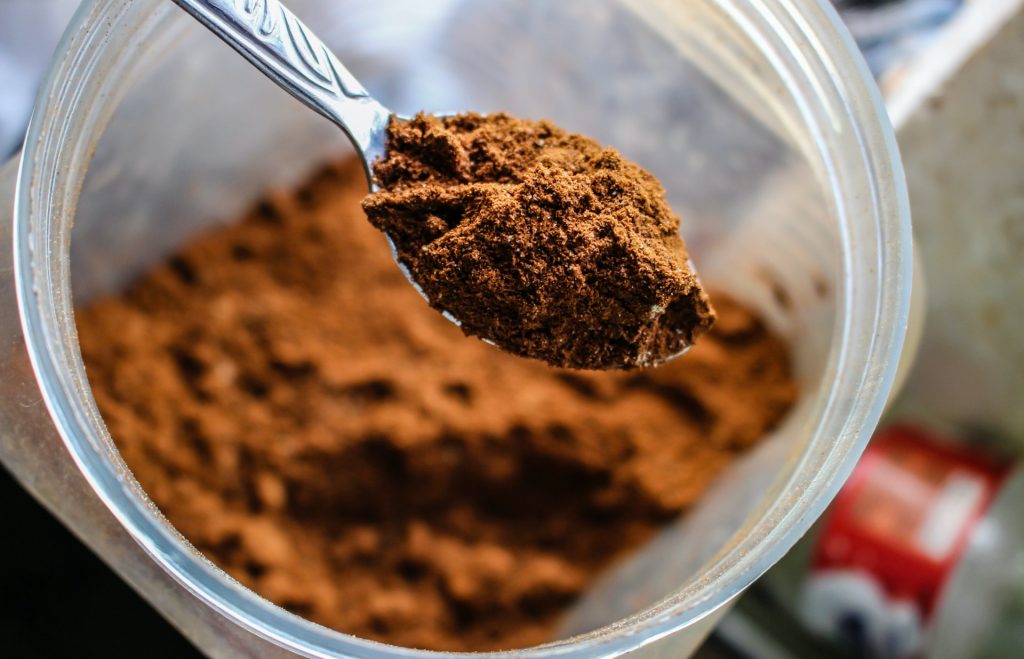
A lot of people spend a lot of money on supplements that they don’t need. In this section we are going to present the facts about supplements for bodybuilding without the hype.
At the end of it we’ll spell exactly what supps you should be taking to maximize recovery, boost your training power and energy and drive protein synthesis for muscle gain. n
The right supplements will promote the following:
Anabolic Drive
This involves the body naturally producing such muscle hormones as testosterone, human growth hormone and inulin-like growth factor 1 (IGF-1). When your body is in an anabolic state it is also fast tracking protein synthesis to get those muscle repairing amino acids to your muscle cells quickly.
Workout Capacity
The more energy, focus and drive you’ve got going into your workout, the more productive your training will be. Smart nutrition and supplementation in the two hours leading up to your workout will provide you with the nutrients you need to power you through your workout.
Anti Catabolism
After yout workout you will be in a catabolic state. That means that you are in danger of actually losing muscle. One of the most important ways to reverse a catabolic effect after your workout is t take in carbohydrates. Carbs, in the form of glycogen, are your main form of energy when training. By the time you finish your workout, your muscle’s glycogen stores will be all used up. So, taking in a fast acting crb like maltose or dextrose after your workout makes a lot of sense.
Smart Supplementing: Pre-Workout
* Have a meal 60 – 90 minutes before the workout
* Focus on fast release proteins and slow release carbs
* Take no fat in your pre-workout meal
* Take in 20 grams or protein and 30-40 grams of carbs
* If you are taking a pre-workout shake have it 30 minutes before the workout
* Your pre-workout shake should be whey isolate protein based
* Add a banana to your shake
* If on a fat cutting diet, ditch the pre-workout carbs
Check out our favourite whey protein powders here.
Smart Supplementing: Post-Workout
* Take a fast acting whey isolate protein powder shake within 20 minutes after your workout to fast track amino acids to those hungry muscle cells.
* Add 5 mls of creatine to your shake. Creatine is the most effective supplement you can use for boosting muscle size and strength.
* Take 10 grams of Glutamine post workout
* Collagen is also a fantastic protein supplement which you can alternate with whey.
Summary
We’ve laid out everything you need to know to carry you through your first two years of lifting weight and bodybuilding. If you apply yourself consistently to our six key pillars . . .
- Eat to Grow
- Lift Heavy
- Recover
- Sleep
- Supplement
- Be Consistent
You can expect to make beginner gains of at least 6-8kg of lean, quality muscle mass per year. Don’t allow yourself to be sidetracked by so-called shortcuts to getting massive. Believe me, they don’t exist. It’s all about doing the basics right over and over.
So, now that you’ve got a plan, it’s time to get to work – go pump some iron!

